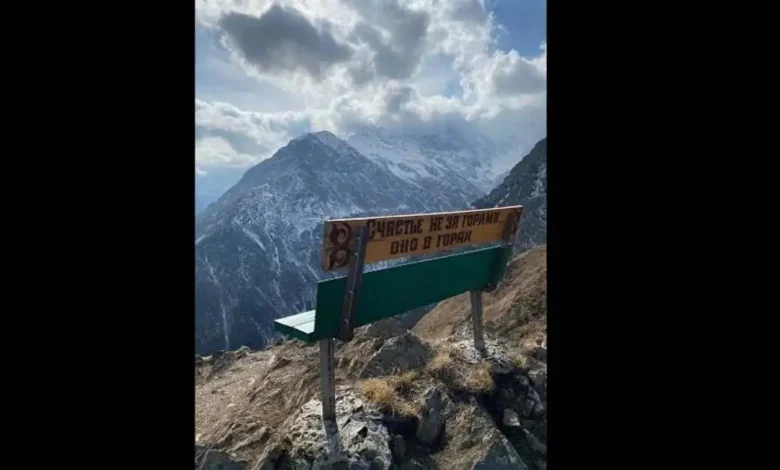Manaslu Circuit Trekking: A Journey Through Nepal’s Most Diverse Landscapes

Nestled in the remote reaches of the Nepalese Himalayas, the Manaslu Circuit Trekking stands as a testament to both natural beauty and cultural richness. This trek is renowned not only for its breathtaking vistas but also for its unique blend of landscapes, from lush green foothills to rugged high-altitude terrain, offering adventurers an unparalleled journey through Nepal’s diverse ecosystems.
Beginning in the bustling city of Kathmandu, where ancient temples and vibrant markets beckon, trekkers embark on a scenic drive to the trailhead in the village of Soti Khola. Here, the adventure truly begins as the trail winds through terraced fields and quaint Gurung villages, providing a glimpse into the traditional mountain life that has endured for centuries.
As the trek progresses, the landscape evolves dramatically. Forested hillsides give way to alpine meadows adorned with rhododendrons, Nepal’s national flower, painting the hillsides in vibrant hues during the spring season. Crossing the Budhi Gandaki River on swaying suspension bridges adds an exhilarating element to the journey, bridging not just physical gaps but also cultural divides as trekkers encounter diverse ethnic groups such as the Gurungs, Tamangs, and Tibetans, each with their own distinct customs and languages.
The highlight of the Manaslu Base Camp Trek is undoubtedly the crossing of the Larkya La Pass, standing at an altitude of 5,106 meters (16,752 feet). This challenging ascent rewards trekkers with panoramic views of snow-capped peaks including Manaslu itself, the eighth highest mountain in the world. The sense of achievement upon reaching the pass is matched only by the awe-inspiring descent into the dramatic Marsyangdi Valley, where barren landscapes carved by ancient glaciers contrast sharply with the verdant slopes left behind.
Throughout the trek, accommodations range from cozy teahouses run by hospitable locals to tented campsites beneath starlit skies, offering a true immersion into the rhythms of mountain life. Evenings are spent recounting the day’s adventures over hearty Nepali meals, warmed by the crackling fire of yak dung stoves, fostering a sense of camaraderie among fellow trekkers and guides alike.
Beyond its natural splendor, the Manaslu Circuit Trekking holds cultural significance as well. Passing monasteries adorned with prayer flags fluttering in the Himalayan breeze, trekkers gain insight into the spiritual traditions that permeate every aspect of life in these remote mountain villages. Encounters with monks engaged in prayer ceremonies and the chance to participate in rituals provide a profound glimpse into the spiritual heart of the Himalayas.
As the trek concludes in the bustling market town of Besisahar, trekkers depart with not just memories but a deep appreciation for Nepal’s diverse landscapes and the warmth of its people. The Manaslu Circuit Trekking is more than just a physical journey; it is a transformative experience that leaves an indelible mark on all who embark upon its winding paths through Nepal’s most diverse landscapes.
Introduction to Manaslu Circuit Trekking
The 14 Day Manaslu Circuit Trekking is a thrilling adventure nestled in the remote corners of the Nepalese Himalayas. It offers trekkers a unique alternative to the more popular routes, showcasing pristine landscapes and rich cultural heritage. This trek encircles Mount Manaslu, the eighth highest peak in the world, providing stunning views of its snow-capped summit and surrounding peaks. Renowned for its off-the-beaten-path appeal, the trek offers a challenging yet rewarding experience, combining high mountain passes, diverse flora and fauna, and encounters with traditional mountain communities.
Geography and Climate of the Manaslu Region
Located in the Gorkha district of central Nepal, the Manaslu region boasts a varied terrain that ranges from subtropical foothills to alpine conditions. The trek navigates through valleys carved by the Budhi Gandaki River, ascending gradually towards the rugged Larkya La Pass at 5,106 meters (16,752 feet) above sea level. The region experiences a wide range of climates due to its diverse topography, from temperate forests to arid high-altitude landscapes. Trekkers can expect clear skies and stunning views during the spring and autumn trekking seasons, although the winter months bring colder temperatures and occasional snowfall.
Diverse Landscapes of the Manaslu Circuit Trekking
The Manaslu Circuit Trekking showcases a remarkable diversity of landscapes, each more breathtaking than the last. Starting from lush green forests and terraced fields in the lower reaches, the trek progresses through pristine alpine meadows adorned with colorful rhododendrons during the spring bloom. As trekkers ascend towards the Larkya La Pass, the scenery transitions into barren, rocky terrain punctuated by glacial lakes and towering peaks. This variety ensures that every day of the trek offers new vistas and challenges, making it a favorite among adventure seekers and nature enthusiasts alike.
Tropical Forests and Waterfalls
The trek begins in the subtropical foothills where dense tropical forests flourish, echoing with the calls of diverse bird species and the rustling of wildlife. Trekkers traverse narrow trails flanked by towering trees draped in moss and vibrant orchids, encountering cascading waterfalls that punctuate the landscape. These forests provide a stark contrast to the barren high-altitude terrain encountered later in the trek, offering a glimpse into the ecological richness of the Manaslu region.
Rice Fields and Traditional Villages
Throughout the lower reaches of the trek, terraced rice fields carved into the hillsides create a patchwork of greenery, reflecting the agricultural livelihoods of the local communities. Traditional villages inhabited by Gurung, Tamang, and Tibetan ethnic groups dot the landscape, each offering a warm welcome to trekkers with their unique cultural practices and hospitality. The trek provides opportunities to interact with locals, witness daily village life, and explore ancient monasteries and prayer sites that serve as spiritual anchors for these mountain communities.
Sub-Alpine Forests and Rhododendron Groves
As trekkers ascend higher along the 12 Day Manaslu Circuit Trek, they traverse through sub-alpine forests characterized by a mix of coniferous trees such as pine and fir. These forests provide a serene backdrop with dappled sunlight filtering through dense foliage. A highlight during the spring season is encountering vibrant rhododendron groves in full bloom, painting the hillsides in shades of red, pink, and white. These floral displays add a surreal beauty to the trekking experience, contrasting sharply with the rugged terrain as the altitude increases.
Alpine Meadows and Yak Pastures
Above the treeline, the landscape opens up to expansive alpine meadows dotted with wildflowers and medicinal herbs. These meadows provide grazing grounds for yaks, revered beasts of burden in the Himalayas. Trekkers may encounter these sturdy animals grazing peacefully against the backdrop of towering peaks. The alpine environment offers panoramic views of snow-capped mountains and distant valleys, creating a sense of tranquility amidst the raw natural beauty.
Arctic Tundras and Glaciers
Approaching the Larkya La Pass, trekkers enter the realm of arctic tundras where the landscape is dominated by barren rocky terrain and glaciers. The air becomes thin and crisp, and the surroundings are marked by moraine fields left behind by ancient glaciers. The stark beauty of this high-altitude environment, with its vast expanses of ice and rock, provides a humbling perspective on the forces of nature at work in the Himalayas.
Biodiversity Hotspots Along the Trail
The Manaslu Circuit Trek is renowned as a biodiversity hotspot, showcasing a wide range of flora and fauna adapted to varying altitudes and climates. From subtropical forests teeming with orchids and ferns to alpine meadows adorned with edelweiss and gentians, each ecosystem harbors its own unique species. Trekkers may spot elusive Himalayan wildlife such as the endangered snow leopard, Himalayan tahr, and red panda, highlighting the region’s importance for conservation efforts and ecological research.
Wildlife Encounters: Rare Species and Endemic Birds
Throughout the trek, wildlife enthusiasts are treated to sightings of rare species and endemic birds adapted to the rugged Himalayan terrain. Himalayan monal, the national bird of Nepal, flaunts its iridescent plumage in forest clearings, while lammergeiers circle overhead in search of prey. Trekkers may also encounter elusive species such as the musk deer and Himalayan blue sheep, adding an element of excitement and wonder to the journey through Nepal’s pristine wilderness. These encounters underscore the importance of preserving the natural habitats that support such diverse and unique wildlife populations.
Cultural Significance of the Manaslu Region
The Manaslu region holds profound cultural significance, shaped by centuries of Tibetan influence and rich Buddhist heritage. This remote corner of Nepal is home to ethnic communities such as the Gurungs, Tamangs, and Tibetans, each contributing unique traditions, languages, and customs to the region. Monasteries and stupas dot the landscape, serving as spiritual centers where locals gather for prayer and festivals. The preservation of these cultural practices amidst the backdrop of the Himalayas adds depth and meaning to the Manaslu Circuit Trekking, offering trekkers a glimpse into a way of life steeped in spirituality and communal harmony.
Tibetan Influence and Buddhist Heritage
The influence of Tibetan culture and Buddhism is palpable throughout the Manaslu region, evident in architectural styles, religious festivals, and daily rituals. Monks clad in crimson robes perform intricate rituals at monasteries adorned with prayer flags fluttering in the mountain breeze. Mani walls, inscribed with Buddhist prayers and symbols, line the trekking route, inviting travelers to reflect on the interconnectedness of all living beings. Trekkers often participate in traditional ceremonies and receive blessings from lamas, fostering a deep appreciation for the spiritual traditions that permeate every aspect of life in these remote mountain villages.
Traditional Tea Houses and Local Cuisine
Along the Manaslu Circuit Trekking, trekkers are welcomed into traditional tea houses run by local families, offering a glimpse into the warmth and hospitality of Nepali mountain culture. These cozy establishments provide comfortable lodging and hearty meals, often featuring local specialties such as dal bhat (rice and lentils), momos (dumplings), and thukpa (noodle soup). The communal dining experience fosters connections between trekkers and locals, exchanging stories and sharing laughter around crackling yak dung stoves. The emphasis on locally sourced ingredients and traditional cooking methods adds to the authenticity of the culinary experience, making each meal a memorable part of the trekking adventure.
Community-Based Tourism Initiatives
Community-based tourism initiatives have flourished in the Manaslu region, empowering local communities to actively participate in and benefit from tourism activities. Lodges and tea houses are often owned and operated by villagers, providing sustainable livelihoods and preserving cultural heritage. Guides and porters from nearby villages share their intimate knowledge of the terrain and local traditions, enriching the trekking experience with personal insights and genuine hospitality. These initiatives prioritize environmental conservation and responsible tourism practices, ensuring that future generations can continue to enjoy the natural beauty and cultural richness of the Manaslu Circuit.
Challenges Facing the Manaslu Region’s Ecosystems
Despite its pristine beauty, the Manaslu region faces several environmental challenges exacerbated by climate change and increasing tourism. Deforestation for fuel and construction materials threatens fragile ecosystems, while waste management issues pose risks to water sources and wildlife habitats. The delicate balance between conservation and development requires careful management and community engagement to ensure sustainable practices. Initiatives promoting responsible tourism, alternative energy sources, and waste reduction are essential to safeguarding the region’s biodiversity and cultural heritage for future generations. By addressing these challenges collectively, stakeholders can preserve the natural and cultural treasures that make the Manaslu Circuit Trek a truly unforgettable journey through Nepal’s Himalayan wilderness.
Conservation Efforts and Sustainable Tourism Practices
Conservation efforts and sustainable tourism practices are integral to preserving the natural beauty and cultural heritage of the Manaslu region. Local communities, along with NGOs and government agencies, collaborate on initiatives to minimize environmental impact, promote waste management, and support community-based tourism. Lodges and tea houses employ eco-friendly practices, while trekking companies emphasize responsible tourism guidelines such as carrying out trash and minimizing plastic use. These efforts ensure that future generations can continue to enjoy the pristine landscapes and rich cultural traditions of the Manaslu Circuit Trekking.
Best Time to Visit for Optimal Landscape Views
The best time to visit the Manaslu Circuit Trekking for optimal landscape views is during the spring (March to May) and autumn (September to November) seasons. In spring, the hillsides burst into color with blooming rhododendrons and other wildflowers, creating a picturesque backdrop against clear skies. Autumn offers crisp, dry weather with excellent visibility, ideal for capturing panoramic views of snow-capped peaks and dramatic valleys. These seasons also coincide with major festivals such as Dashain and Tihar, providing opportunities to witness local culture and traditions amidst stunning natural beauty.
Photography Tips for Capturing Stunning Landscapes
Capturing stunning landscapes along the Manaslu Circuit Trekking requires careful consideration of lighting, composition, and perspective. Utilize early morning and late afternoon light to enhance texture and depth in mountainous terrain. Include foreground elements such as prayer flags or trekking companions to provide scale and context. Experiment with different focal lengths to emphasize the vastness of the landscape and use a tripod for stability in low light conditions or long exposures. Don’t forget to capture moments of local life and cultural rituals, adding layers of storytelling to your photographic journey through Nepal’s diverse landscapes.
Safety Precautions for High-Altitude Trekking
High-altitude trekking presents unique challenges that require careful preparation and awareness. Acclimatization is crucial to avoid altitude sickness, so ascend gradually and allow time for your body to adjust. Stay hydrated and consume high-calorie meals to maintain energy levels. Dress in layers to adapt to changing weather conditions and protect against sun exposure with sunscreen and sunglasses. Follow the guidance of experienced guides and listen to your body’s signals to recognize early signs of altitude sickness. Carry a first aid kit and familiarize yourself with emergency procedures. By prioritizing safety and health, trekkers can fully enjoy the rewarding experience of high-altitude trekking along the Manaslu Circuit.
Conclusion: Why Manaslu Circuit Trek is a Must-Do Adventure
The Manaslu Circuit Trekking stands as a must-do adventure for those seeking a blend of natural beauty, cultural immersion, and physical challenge. This remote trek offers unparalleled landscapes ranging from lush forests and terraced fields to arctic tundras and glacial moraines. The rich tapestry of Tibetan-influenced culture and Buddhist heritage adds depth to the journey, complemented by warm hospitality in traditional tea houses. Conservation efforts and sustainable tourism practices ensure the preservation of this pristine environment for future generations. Whether capturing stunning landscapes through photography or embracing the thrill of high-altitude trekking, the Manaslu Circuit Trekking promises an unforgettable experience that leaves a lasting impression of Nepal’s Himalayan wilderness.








